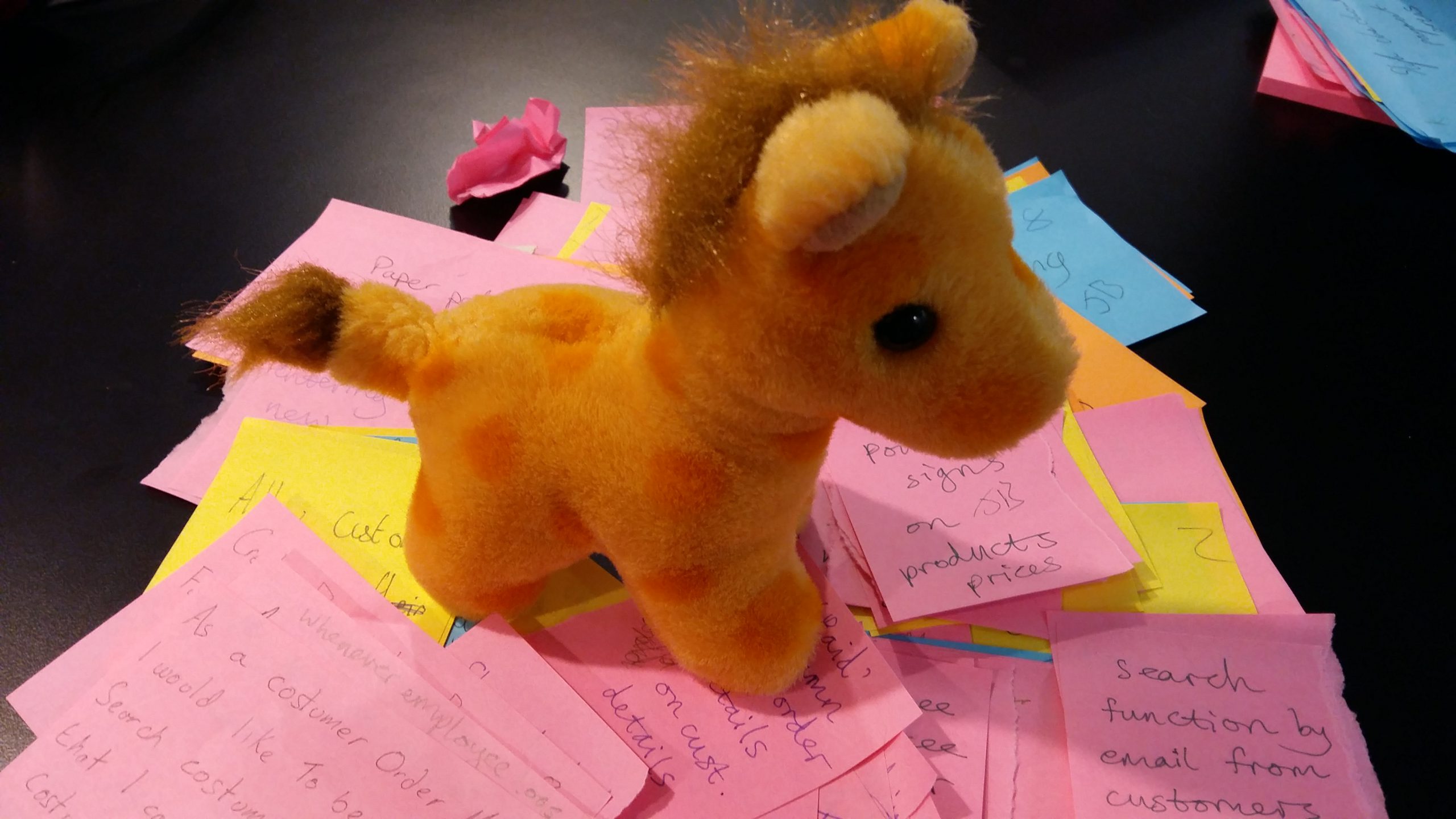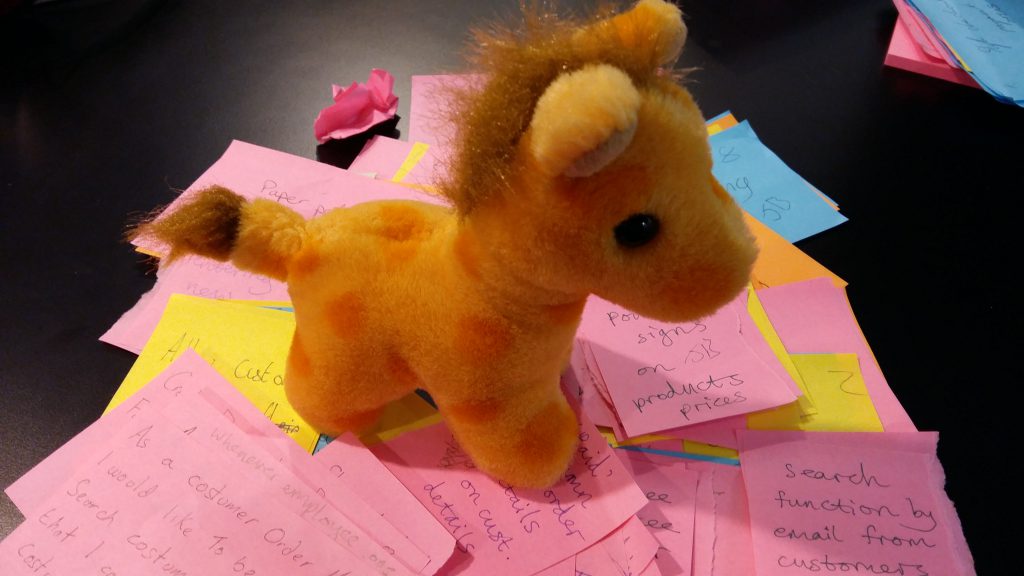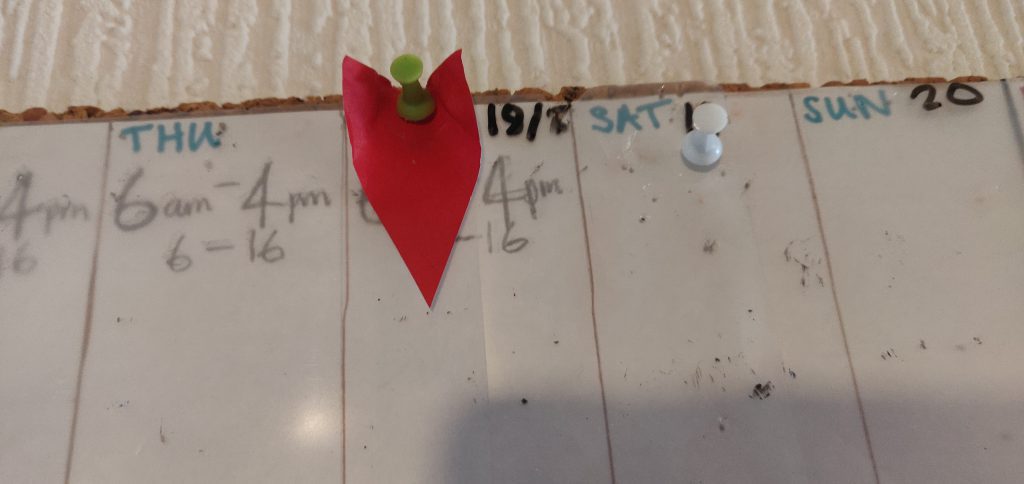
Different flavours of Daily Scrum
The main purpose of your Daily Scrum is to meet as a whole team in front of your Scrum board and share your progress and obstacles, ideally towards your Sprint Goal. It is time-boxed to fifteen minutes maximum. The Daily Scrum can also be a convenient time for moving tasks around on the board, in case you’ve not been doing that throughout the day. If you’re using story points and a burn-up game, you will probably also count up your total points for the day and add them to your chart.
This post provides some ideas and common ways that people go about doing their Daily Scrums. You may want to switch up these ways every so often, as following a certain ritual by rote can become stale and doesn’t help people in the team to be thoughtful about where they need help.
Three questions
Each member of the team answers three questions:
- What did you do yesterday?
- What are you planning to do today?
- Do you have any blockers/impediments?
The third question is an interesting one, and after a while can accidentally get left off. It just refers to if anything is stopping you do the tasks you are trying to do (particularly the sprint goal-related ones), and it can be amazingly efficient to state these to the team, because someone might immediately be able to step in and offer a solution.

However, do be aware that this is not the place for any type of extended discussion about how you’re going to do your tasks. If a couple of team members start going off on a tangent about task details, try to remind them of this—at work, the phrase we use is “Okay, let’s take this offline.” You could make this more fun with a ‘warning bell’ or similar that people can ring if people have strayed off-topic. (Another fun addition can be a team mascot, e.g. a toy, that you throw to the next team member to get them to go next in giving their update.)
The ‘round robin’
The round robin is just a way to the ‘traditional’ Scrum style, where each team member is called upon in turn to answer the three questions above, and, at the same time, they can step forward and move their own tasks around the board to reflect what they’re saying.
(Incidentally, one way to make this more entertaining is to have a little ‘team mascot’ like a stuffed toy, and each team member throws it to someone else in the team to get their update next.)
The ‘board walk’
A board walk is an alternative to taking turns one at a time in the team to give their updates (sometimes referred to as a ‘round robin’ style of Daily Scrum, for instance using the questions above). A board walk is where you work backwards through your Scrum board columns and look at each task one by one, and the relevant team member gives an update on each piece of work. I think this might work better if you have more columns than ‘doing today’ and ‘done’, perhaps if you are doing Scrum for a specific project, e.g. writing a thesis—then you might look through, first, all the tasks under ‘received feedback’, then ‘sent out for feedback’, then ‘edited’, then ‘writing’.
Case-study: Our Daily Scrum routine
Here’s how a typical Daily Scrum session goes like for us:
We’ll start by each moving our tasks into the ‘done’ column. Then one or the other of us will count up the story points from those tasks, using our clicker. We’ll record that total onto whatever burn-up game we are using at the time, and then take the tasks out of the ‘done’ column. If they’re a regular (repeating) ticket they’ll go back into ‘doing today’ to be done tomorrow, or onto the calendar for whenever they’re next due. If they were a one-off task, then it’ll move into the ‘done-done’ (or ‘done this week/sprint’) column, which will later be emptied during the Sprint Review.
Next we’ll move along the little marker above today’s date on the calendar to point to tomorrow, and we’ll collect up any tasks from tomorrow on the calendar, move them to the ‘doing today’ column, and discuss who is doing what.

If one or the other of us needs to go to bed early for some reason (because we almost always end up doing our Daily Scrum last thing at night when we remember), then they might leave early, leaving the other person to do the count-up of story points themselves. This isn’t a great habit though, because the real value comes from discussing the next day’s plans together so that we’re both on the same page. We could improve our Daily Scrums still further by making a point to set a Sprint Goal and to check in daily on whether we’re stuck or making good progress towards it.







